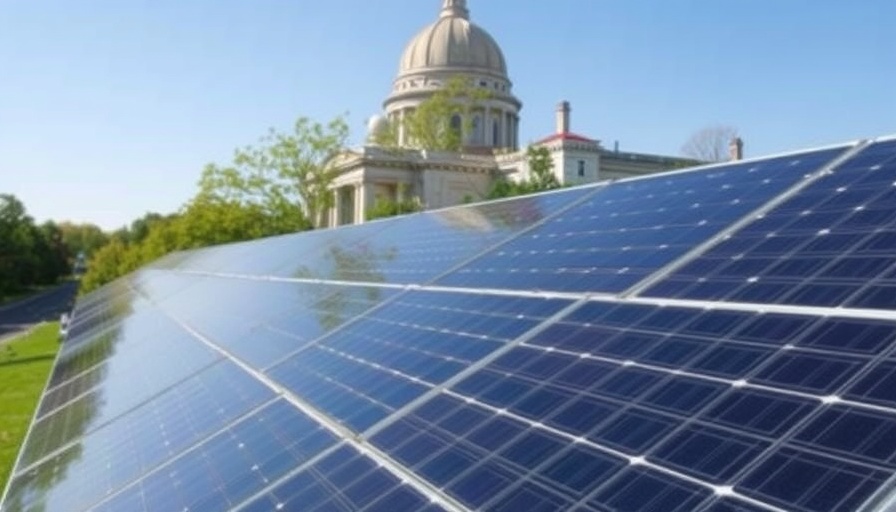
Transformative Energy Savings: How the Inflation Reduction Act Makes Solar Accessible
Homeowners across the U.S. are taking significant strides toward energy independence and savings, thanks not only to rising energy prices but also thanks to the Inflation Reduction Act (IRA). Passed in 2022, this landmark legislation has transformed the landscape for renewable energy in the country, making solar power more affordable and encouraging homeowners to shift to cleaner energy options.
Real-Life Impact: Stories from Homeowners Embracing Solar
Three exemplary stories illustrate how Americans are harnessing the IRA's benefits to lower energy costs significantly. Keith Cohick from Salisbury, North Carolina, is one of those homeowners. With the IRA's solar Investment Tax Credit extending benefits from 26% to 30%, Keith could offset a substantial portion of his upfront investment. As a direct effect, nearly 65% of his electricity now comes from solar energy, supported by a storage solution to manage surplus electricity effectively.
Keith is not alone. A Sacramento homeowner combined federal incentives and local utilities' incentives to drastically reduce her initial costs, leading to almost zero electric bills. The IRA has directly facilitated such transformations by promoting the financial viability of solar setups during a time when energy costs are escalating.
Addressing Climate-Driven Challenges: The Need for Resiliency
The IRA aims to bolster the nation’s energy resiliency in response to increasingly severe weather and climate conditions. The Curtis family in La Cañada, California, sought solar not only for personal savings but as a proactive measure against the frequent power outages in their region. Jon Curtis explained how their decision to electrify their home and install a solar battery system adds stability to the grid during peak demand times—an essential move as more communities embrace renewable energy strategies.
Their switch to an all-electric home with enhancements, such as heat pumps integrated into their energy system, means that not only do they enjoy low energy costs, but they also contribute to a reduction in the reliance on fossil fuels. Their example underscores the IRA's role not only in personal financial savings but also in larger community benefits.
An Overview of Financial Incentives and Innovations
The IRA isn’t just an isolated program; it acts as a catalyst for a series of other incentives aimed at promoting sustainable energy investments. Across the country, homeowners can take advantage of various tax credits, rebates, and resources to enhance their energy efficiency. According to estimates, families utilizing these incentives can potentially save over $1,000 annually on energy bills.
Provisions such as the 30% federal tax credit on solar installations significantly increase accessibility for those delayed by initial costs. Beyond that, additional rebates for energy-efficient appliances and electric vehicle infrastructure make the overall transition to a completely electric household more financially feasible for working and lower-income families.
Local vs. National Incentives: Capitalizing on Opportunities
While the IRA serves as a broader framework, local rebates and incentives can further sweeten the deal for homeowners. For instance, areas like Sacramento offer unique program combinations that yield a high return on investment for solar and energy efficiency projects. As homeowners navigate these local opportunities alongside federal incentives, the potential for energy savings and environmental impact rises.
Expert Insights into Renewable Energy Trends
Experts highlight that the state of solar energy is evolving rapidly. As reported, the IRA has already triggered a surge in solar panel installations and related projects across the nation, with more than 3.4 million households benefiting from energy-related tax credits in just the past year. This reflects a push towards clean energy that hasn't been seen at this scale before, which might also play a role in policy shifts and technological innovation in years to come.
In summary, the IRA stands as a powerful legislative tool to help individuals and communities combat rising energy costs while investing in a sustainable future. With the funding and support pledged by the law, the opportunities for homeowners to save money while protecting the environment have never been greater.
 Add Row
Add Row  Add
Add 



 Add Row
Add Row  Add
Add 
Write A Comment